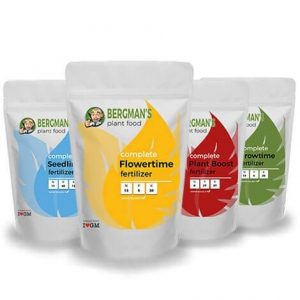The Ultimate Guide to Enzymes for Cannabis Cultivation: Boost Yields and Plant Health
When cultivating cannabis, most growers prioritize lighting, nutrients, and environmental factors. However, one critical yet often overlooked aspect is the role of enzymes. These biological catalysts, known as the unsung heroes of plant biology, can significantly improve the health and growth of cannabis plants while maximizing yields.
Whether you’re growing in soil, coco coir, or hydroponics, enzymes are invaluable for unlocking nutrient potential, enhancing resin production, and ensuring vibrant plant health. This guide dives deep into the role of enzymes in cannabis cultivation, their benefits, the best enzyme products, and how to use them effectively to elevate your yield and quality.
What Are Enzymes?
Enzymes are biological catalysts that accelerate chemical reactions in plants. By breaking down complex organic matter into simpler, more accessible forms, they ensure that nutrients are readily available for plant uptake.
In cannabis cultivation, enzymes are crucial for decomposing dead plant material into usable nutrients, promoting healthier growth and development. While natural enzymes are produced by microbes, fungi, and bacteria in soil, supplementing with enzyme products ensures consistent results.
By introducing additional enzymes, you can enhance nutrient availability, improve soil conditions, and boost overall plant health, making them an essential tool for cannabis growers.

What Are the Benefits of Enzymes in Cannabis Growing?
Enzymes play a vital role in promoting healthier cannabis plants and achieving larger, more potent yields. Here’s how they can revolutionize your cultivation process:
1. Break Down Organic Matter
Dead roots, leaves, and organic debris often accumulate in the root zone, blocking oxygen flow and stunting root growth.
- Enzymes like cellulase decompose this debris into simpler molecules that plants can absorb as nutrients.
- A clean root zone ensures better oxygen flow, allowing roots to expand and absorb essential elements, resulting in healthier, more vigorous plants.
2. Maximize Nutrient Uptake
Enzymes unlock the nutrients your plants need by breaking down complex compounds into simpler, absorbable forms.
- Proteins and starches are converted into amino acids and sugars, which are easier for the plant to utilize.
- This maximizes the efficiency of fertilizers, boosting growth and minimizing waste.
- Stronger, more nutrient-rich plants mean higher-quality yields.
3. Enhance Soil Microbial Activity
Healthy soil is the foundation of successful cannabis cultivation.
- Enzymes promote the activity of beneficial microbes that break down organic matter into accessible nutrients.
- Active microbes improve nutrient cycling, protect against diseases, and create a resilient growing environment.
- Plants grown in enzyme-enriched soil are better equipped to handle environmental stressors.
4. Boost Resin and Terpene Production
Enzymes significantly enhance the quality and potency of your harvest during the flowering stage.
- By stimulating hormone production, enzymes increase the synthesis of cannabinoids and terpenes.
- The result is larger, more aromatic buds with stronger effects.
- Improved resin production also elevates the value of your harvest, making it more marketable.
5. Provide Natural Pest and Disease Defense
Enzymes offer an eco-friendly solution to common cultivation challenges.
- Enzymes like chitinase break down the exoskeletons of pests, acting as a natural pest control method.
- They detoxify harmful compounds, strengthening the plant’s immune system and reducing the risk of diseases.
- This natural defense mechanism reduces the need for chemical pesticides, keeping your growth organic and safe.
What Are the Most Commonly Used Enzymes in Cannabis Cultivation?
Several types of enzymes are commonly used in cannabis cultivation. Each enzyme serves a unique role in plant development, whether it’s breaking down organic matter, supporting plant immunity, or improving nutrient uptake.
- Cellulase: Breaks down cellulose in plant cell walls, clearing dead roots and organic debris.
- Xylanase: Works with cellulase to decompose organic material, enhancing nutrient availability.
- Beta-glucosidase: Activates the plant’s immune system by breaking down sugars in cell walls.
- Hemicellulase: Enhances cellulase and xylanase activity by breaking down hemicellulose in plant tissues.
- Amidase: Converts nitrogenous compounds into usable forms, ensuring plants receive sufficient nitrogen.

Natural vs. Synthetic Enzymes: Which is Better For Growing Cannabis?
When choosing enzyme products, growers often consider natural and synthetic options. Each has its advantages depending on your cultivation method and goals.
Natural Enzymes
Advantages:
- Eco-friendly: Natural enzymes are in line with organic growing practices, promoting sustainability and minimizing environmental impact.
- Supports microbial activity: These enzymes encourage the growth of beneficial microbes in the soil, fostering a healthy, thriving ecosystem for plant roots.
Drawbacks:
- Shorter shelf life: Natural enzymes can degrade over time, meaning they may not be as long-lasting as synthetic options.
- Lower enzyme concentration: Natural enzymes may have a lower concentration, leading to less predictable or slower results, especially in large-scale operations.
Synthetic Enzymes
Advantages:
- Highly potent and stable: Synthetic enzymes are specifically engineered for high performance, ensuring consistent results and long shelf life.
- Precise control: They allow for exact control over enzyme concentrations, which is particularly beneficial for hydroponic or highly controlled growing systems.
- Efficient in specific applications: Synthetic enzymes can be tailored to target specific issues in your system, such as nutrient buildup or biofilm formation.
Drawbacks:
- Potential disruption of soil microbiome: If used excessively or incorrectly, synthetic enzymes can disrupt the balance of beneficial microbes in the soil, which can harm plant health in organic systems.
Which to Choose?
For organic cannabis growers, natural enzymes are an ideal choice as they align well with eco-conscious cultivation methods. These enzymes tend to be gentler on the environment and are typically better suited for soil-based systems.
On the other hand, synthetic enzymes are preferred by hydroponic or precision-focused growers due to their high potency, consistent performance, and ability to target specific issues more effectively.
The key to success is finding the right enzyme solution that fits your cultivation system, whether organic or hydroponic, to achieve optimal results.

When and How to Use Enzymes for Cannabis Cultivation
The application of enzyme solutions varies slightly depending on the growing method used—soil-based or hydroponic systems.
Proper enzyme application at each growth stage ensures optimal plant health, nutrient uptake, and yield. Here’s a detailed guide to how to use them for a perfect result:
During the Vegetative Stage
The vegetative stage is the foundation of successful growth, and regular enzyme use during this period helps your plants develop strong roots and efficient nutrient absorption.
When to Use:
- Start enzyme applications 1–2 weeks after germination, once the seedlings establish a root system.
- Apply enzymes once a week throughout the vegetative stage.
Key Benefits:
- Promotes Root Health: Enzymes break down organic matter in the root zone, preventing buildup and supporting healthy root expansion.
- Enhances Nutrient Uptake: Converts complex organic material into bioavailable nutrients, ensuring the plant absorbs essential elements like nitrogen for vigorous growth.
- Prevents Root Zone Issues: Keeps the rhizosphere clean, reducing the risk of root rot or other fungal diseases.
- Encourages Strong Stem and Leaf Development: A robust root system ensures the plant has ample energy to grow larger and prepare for the flowering stage.
By using enzymes weekly during the vegetative stage, you establish a strong foundation for the plant’s overall health and productivity. Pair enzymes with a balanced nutrient regimen to maximize their benefits.

During the Flowering Stage
In the flowering stage, enzymes are critical for supporting bud formation and resin production.
When to Use:
- Begin weekly enzyme applications at the start of the flowering phase.
- Continue applying enzymes until 1–2 weeks before harvest, particularly during peak nutrient demand (weeks 3–6).
Key Benefits:
- Boosts Bud Growth: Enzymes ensure nutrients are readily available for the formation of dense, healthy flowers.
- Enhances Resin Production: Supports the synthesis of trichomes, increasing potency and aroma.
- Prevents Nutrient Lockout: Maintains a clean root zone, allowing plants to utilize nutrients efficiently.
Post-Harvest
After harvest, enzymes recycle nutrients and improve soil health.
When to Use:
- Apply enzymes immediately after harvest to decompose root and plant debris.
- Repeat enzyme treatments 1–2 times within 4 weeks to enhance soil preparation for the next cycle.
Key Benefits:
- Accelerates Decomposition: Converts plant residue into bioavailable nutrients.
- Recycles Nutrients: Enriches the growing medium, reducing the need for synthetic fertilizers.
- Maintains Soil Health: Prevents the buildup of decaying organic material, keeping the soil balanced and ready for new crops.
Tips for Effective Enzyme Use
- Mix Properly: Follow product-specific instructions for dilution rates.
- Combine with Additives: Enzymes work well with beneficial microbes, molasses, and organic nutrients.
- Monitor Response: Adjust frequency and concentration based on plant growth and environmental factors like temperature and humidity.
By using enzymes consistently and at the right time during the vegetative, flowering, and post-harvest stages, you’ll foster healthier plants, improve soil quality, and maximize yields.

How to Make Homemade Enzymes for Cannabis? A Step-by-Step Guide
For a cost-effective alternative, try this simple homemade enzyme recipe:
Ingredients:
- 250ml molasses
- 750g fresh fruit or vegetable scraps (e.g., pineapple, papaya, banana peels)
- 2.5L clean water
Equipment needed:
- 2 plastic containers with lids (preferably airtight)
- Measuring jug
- Knife and chopping board
Steps:
- Prepare the Molasses Mixture: In one of the containers, combine the molasses with clean water. Stir the mixture until the molasses dissolves completely into the water.
- Prepare the Scraps: Chop up your fresh fruit or vegetable scraps (pineapple, papaya, or banana peels work great) into small pieces. Add the chopped scraps to the second container.
- Combine and Submerge: Pour the molasses-water mixture over the fruit and vegetable scraps in the second container, making sure the scraps are fully submerged. Leave a little room at the top of the container to allow for gas expansion during fermentation.
- Ferment the Solution: Cover the container with the lid and place it in a warm, dark area to ferment. Let it sit for 2-3 weeks. Open the lid once a week to release any built-up gases and stir the contents gently.
- Strain and Store: After 3 months, your enzyme solution should be ready to use. You’ll know it’s ready when the solution has turned a dark brown color and has a distinct vinegary smell. Strain the solution to remove the solid scraps before applying it to your plants.
Pro Tip:
Make sure to store your homemade enzyme solution in an airtight container when not in use, and always dilute the solution with water before applying it to your cannabis plants to avoid over-concentration.

Maximizing Enzyme Benefits with Additives
To maximize the benefits of enzymes in cannabis cultivation, pairing them with specific additives can significantly enhance their effectiveness. Here’s how each additive plays a key role in supporting plant growth:
1. Molasses:
Molasses is rich in sugars, which serve as a food source for beneficial microbes in the soil. These microbes, in turn, help increase enzyme production, ensuring a better breakdown of organic matter and more efficient nutrient cycling.
By enriching the soil with molasses, you not only support microbial activity but also boost the overall health of your growing medium.
2. Chelated Minerals:
Chelated minerals are essential for improving nutrient absorption in cannabis plants, especially when combined with enzymes. Enzymes help unlock nutrients from the soil, and chelated minerals ensure these nutrients are more readily available for root uptake.
This powerful combination maximizes nutrient absorption, promoting healthier plants and higher yields.
3. Amino Acids:
Amino acids are the building blocks of proteins and play a crucial role in plant growth, particularly in the development of roots and flowers.
When paired with enzymes, amino acids support faster root development and encourage robust flower growth. Enzymes help break down organic material, releasing amino acids and other nutrients. This allows your plants to thrive throughout their life cycle, promoting healthier roots and more abundant blooms.
Conclusion: Boost Yields and Plant Health with Cannabis Enzymes
Enzymes are an indispensable tool for cannabis cultivation, providing benefits like improved nutrient uptake, enhanced resin production, and natural pest control. Whether you choose natural or synthetic enzymes, their application can transform your growing experience by promoting healthier plants and larger yields.
By understanding their role and integrating them into your cultivation practices, you can unlock the full potential of your cannabis plants. Start using enzymes today and experience the difference they make in your garden.
Frequently Asked Questions About Cannabis Enzymes for Marijuana Growing
Enzymes are biological catalysts that break down complex organic molecules into simpler compounds, making nutrients more accessible to plants. They improve soil health, enhance nutrient uptake, prevent root rot, and promote overall plant vitality.
Absolutely. Cannabis enzymes are critical in hydroponics for breaking down organic material, preventing nutrient buildup, and maintaining a clean root zone. They help recycle water efficiently and keep the system free from clogs or harmful biofilms, ensuring optimal nutrient cycling and plant growth.
Yes, homemade enzyme solutions can be made using organic materials like papaya or pineapple. While effective for breaking down organic matter, homemade solutions are less stable and consistent compared to commercial products. They’re best suited for soil-based systems rather than hydroponics.
No, Cannabis enzymes do not replace nutrients. Instead, they work alongside nutrients by breaking down organic matter into forms that plants can easily absorb. This enhances the efficiency of fertilizers and ensures plants receive maximum nutritional benefits.
Cannabis enzymes break down proteins, starches, and lipids into smaller molecules like amino acids and sugars. This process boosts nutrient absorption, promotes faster growth, and results in stronger plants with higher yields.
The best enzymes for cannabis are those that aid in breaking down organic matter, improving soil health, and supporting overall plant growth. Key enzymes often recommended include:
- Cellulase: Breaks down cellulose in plant debris, improving soil health.
- Xylanase: Assists cellulase in decomposing plant cell walls.
- Amidase: Converts nitrogen compounds into absorbable forms, enhancing nutrient uptake.
- Chitinase: Degrades chitin in pests’ exoskeletons, offering natural pest control.
- Lipase: This breaks down lipids and fats, promoting the breakdown of organic matter and improving soil structure.
- Phosphatase: Converts organic phosphorus into forms accessible to plants, boosting overall nutrient uptake.
- Protease: Breaks down proteins, facilitating nutrient absorption.
- Amylase: Assists in breaking down starches into simpler sugars, improving energy availability for plants.
- Cannazym by CANNA: Ideal for breaking down dead roots and enhancing nutrient cycling.
- Sensizym by Advanced Nutrients: Contains over 80 enzymes, suitable for both hydroponic and soil systems.
- Hygrozyme by SIPCO: A versatile product that improves root health and prevents root rot.
Choose a product based on your growing medium and specific needs.
Cannabis enzymes play a crucial role at various stages of plant growth, ensuring optimal health, nutrient availability, and a clean growing environment. Here’s a breakdown of when to apply them:
- Vegetative Stage: Apply enzymes weekly during the entire vegetative stage.
- Flowering Stage: Apply enzymes weekly from the start of flowering until 1–2 weeks before harvest.
- Post-Harvest: Use enzymes immediately after harvest and repeat 1–2 times over the following 4 weeks.
Consistent enzyme application during these stages helps maximize plant health, improve yields, and maintain a sustainable growing environment.
Yes, cannabis enzymes optimize nutrient availability during flowering, leading to larger, more potent buds. They also support resin production, enhancing the quality and potency of your cannabis.
Yes, certain enzymes like chitinase can degrade the exoskeletons of pests, providing natural pest control. Enzymes also detoxify harmful compounds, boost plant immunity, and improve resistance to diseases and environmental stressors.
Enzymes break down stored nutrients in seeds, accelerating sprouting and strengthening early root development. This leads to healthier seedlings and potentially higher yields.
Yes, natural enzymes are eco-friendly and perfectly suited for organic systems. They enhance soil fertility without the need for synthetic chemicals.
The dosage depends on:
- Product Type: Follow the manufacturer’s instructions for application rates.
- Growth Stage: Higher doses are usually needed during the vegetative phase, with reduced amounts during flowering.
- Growing Conditions: Adjust based on temperature, humidity, and plant responses.
- Enhanced Nutrient Uptake: Break down organic matter into easily absorbable forms for plants.
- Improved Soil Health: Decompose debris, preventing harmful buildup and promoting microbial activity.
- Prevention of Root Issues: Avoid root rot and nutrient blockages, especially in hydroponic systems.
- Boosted Growth: Support strong root and plant development for higher yields.
- Better Bud Quality: Enhance resin production and bud formation for more potent flowers.
- Pest and Disease Control: Naturally combat pests and boost plant resilience.
ILGM Fertilizer

Ultimate Marijuana Fertilizer
Nourish your plants from seedling to harvest with our premium formula!
- Enough for 5+ Plants: Perfect for your growing needs.
- Exclusive Discount Package: Save more while you grow!
- Versatile Use: Ideal for soil, hydroponics, and all growing mediums.
- Optimal Plant Health: The best way to ensure robust growth and thriving yields.
ILGM Plant Protector

Ultimate Plant Protection for Your Cannabis
Safeguard your plants from diseases and harmful pests with our effective formula!
- Comprehensive Protection: Keep your cannabis healthy and thriving.
- Three 20 ml Bottles: Sufficient supply for up to 20 plants.
- Versatile Application: Perfect for soil, hydroponics, and all growing mediums.
- Peace of Mind: Ensure a healthy garden with our trusted protector.























